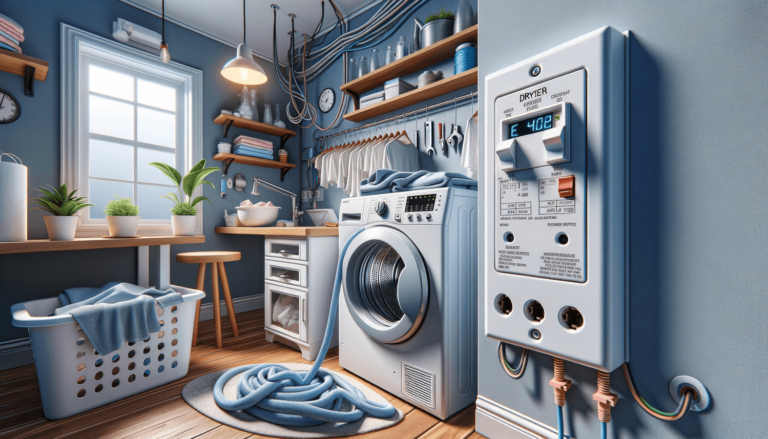

A dryer tripping the circuit breaker is typically caused by an overloaded circuit, a faulty breaker, or a malfunctioning heating element. To resolve this issue, ensure the dryer is not overloading the circuit, check the breaker for proper operation and inspect the heating element for damage.
Utilize proper dryer settings to prevent overloading the circuit. Choose energy-efficient settings, such as ‘Settings King’s recommended Eco mode, when available, to reduce power consumption. Ensure not to exceed the maximum load capacity for your specific dryer model.
Examine the breaker for signs of wear or damage. Consult a qualified electrician if you suspect a faulty breaker. They can determine if a replacement is necessary and install a higher-rated breaker, if needed.
Check the heating element for visible damage or wear. Remove any lint buildup or debris around it. Replace the heating element if it is not functioning properly or shows signs of deterioration.
While we have tackled the most common reasons behind a dryer tripping the circuit breaker, there might be other issues at play. It’s crucial to explore all possibilities in order to rule out any hidden electrical problems.
Loose or faulty electrical connections that go unnoticed can cause a circuit breaker to trip. In addition to ensuring proper dryer settings, it’s essential to periodically inspect the wiring and connections for excessive wear, fraying, or damage. ‘Settings King’ advises contacting a skilled electrician to perform the inspection and necessary repairs to minimize safety risks.
It’s not just the heating element that may be contributing to the issue. A failing dryer motor or a malfunctioning timer might also be causing the circuit breaker to trip. Keep an eye out for any strange noises, vibrations, or erratic behavior from your dryer, as these can indicate issues with internal components. Perform regular maintenance on the machine to avoid unexpected electrical problems.
Improper ventilation can result in overheating, and eventually, tripping the breaker. Ensure that the dryer’s exhaust vent is clear of lint or other obstructions. Also, make certain the ductwork is properly installed and free from damage. As a ‘Settings King’ tip, remember to clean the lint filter after each use to improve efficiency and avoid potential hazards.
Our ‘Settings King’ experts have compiled a list of frequently asked questions to help you further troubleshoot any circuit breaker related issues with your dryer. Explore these practical solutions to ensure your dryer functions efficiently and safely.
A short circuit can cause a breaker to trip immediately when a dryer is turned on. This often occurs due to frayed wiring, a malfunctioning heating element, or faulty appliances plugged into the same circuit.
If the circuit breaker trips during dryer operation, particularly when the heating element is active, it’s a strong indication of a faulty element. Inspect the element for visible damage, and consider testing it with a multimeter or seeking professional help to determine its functionality.
If you’ve exhausted all troubleshooting steps and the breaker continues to trip, consult a qualified electrician. They will determine if a breaker upgrade or dryer replacement is necessary, ensuring your problem is resolved and electrical safety is maintained.
Yes, a clogged exhaust vent can overheat the dryer, leading it to trip the circuit breaker. Ensure proper ventilation by cleaning the lint filter and exhaust vent regularly, as well as inspecting ductwork for damage or obstructions.
Trying a different outlet may work if the previous one is faulty or the circuit is overloaded. However, ensure the new outlet is designed for the appropriate voltage and amperage required by your dryer, and avoid using extension cords.